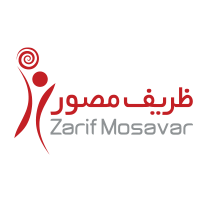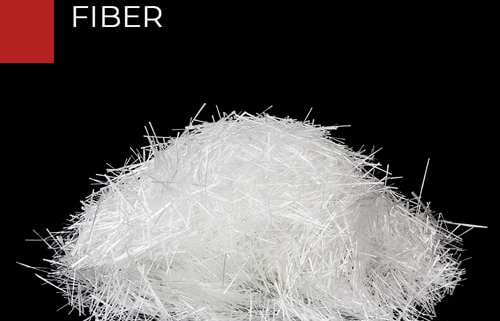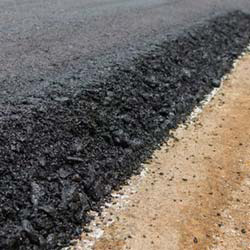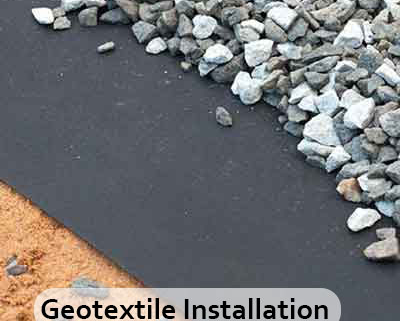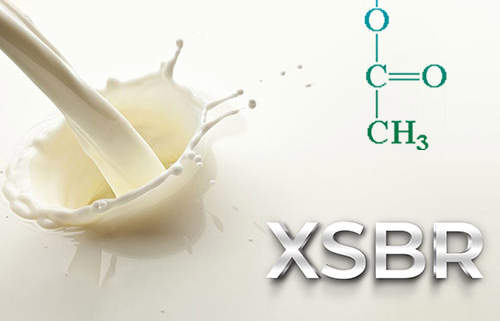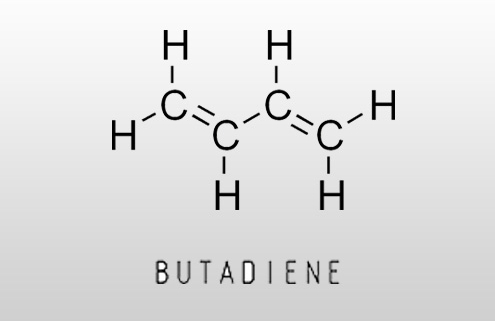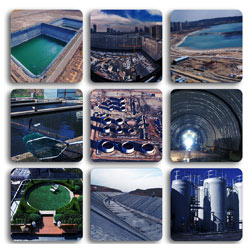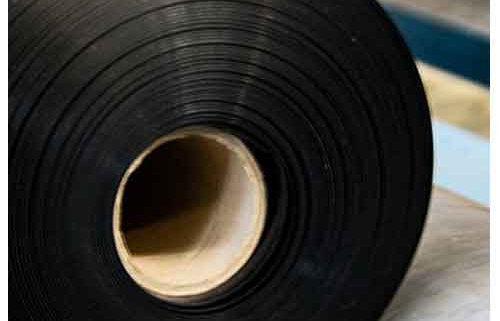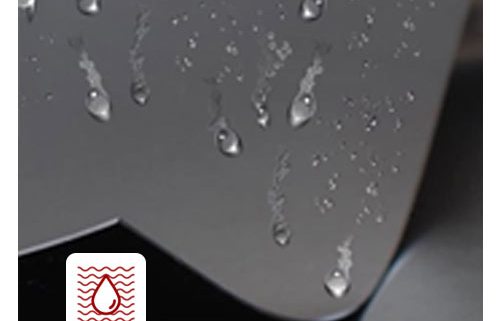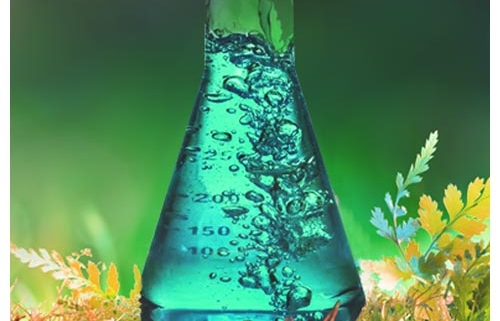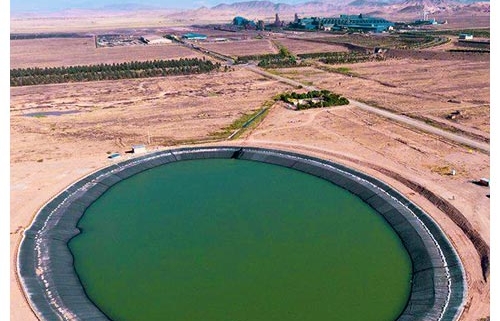Polypropylene fibers (PP fibers)
Polypropylene fiber (PP)
PP fibers are polypropylene fibers produced by chain polymerization of propene monomer. Polypropylene fibers are hard, stable, and heat resistant. In addition, these fibers are antistatic, non-magnetic, and non-conductive. PP fibers have a long lifespan. These fibers can be used in a wide range from 0 to 100 degrees without problems. Since PP fiber is odorless and kind to the skin, it can be used without hesitation in the food, pharmaceutical, and cosmetic industries.
the product: ZarifMosavar staple fibers + catalog
Polypropylene fibers are superior to polyamide fibers in terms of elasticity and flexibility. These fibers have less abrasion resistance. PP fibers have good thermal insulation properties and are very resistant to acids, alkalis, and organic solvents. These fibers are sensitive to heat and light.
These raw fibers are most widely used in the construction and textile industries. They have special characteristics that make them an ideal supplement to achieve specific benefits when used for construction work, especially when added to concrete. These fibers are combined with cement mortar and increase the tensile strength of concrete significantly.
Know more : Polyester staple fibers (PSF), applications and advantages
What is polypropylene fiber made of?
Polypropylene (PP) is a thermoplastic “additive polymer” made from a combination of propylene monomers. Plastic parts are used in various applications, including packaging of consumer products, for various industries, including the automotive and textile industries.
By adding PP fibers to cement mortar, the weight or volume of the mortar does not increase or settle. These fibers are a good substitute for thermal rebars in concrete. We can add polypropylene fibers to concrete in various forms in the form of short and separated pieces.
PP fibers are also used for plastic strength. By adding it to plastic, it reduces plastic cracks due to impact or cracking caused by humidity and temperature changes.
Advantages and disadvantages of PP fibers (polypropylene staple fibers)
Advantages: Ability to absorb high energy in concrete, relatively high melting point, alkali resistance, non-magnetic, no dust absorption, high wear resistance, reasonable and cheap price
Disadvantages: Susceptibility to ultraviolet rays of sunlight is associated with correction and difficulty due to the polarity of its dyeing
Uses of polypropylene fibers
PP fibers are used to make ropes, fishing nets, BCF threads, carpets, artificial grass, concrete, upholstery fabrics, etc. They are also used for geotextile fabrics, pavement repair, roofing felt, and artificial ski slopes.
The price of polypropylene fibers
ZarifMosavar Group Producer of all kinds of synthetic fibers including Polyester fibers، Polypropylene fibers (PP fibers)، Polyamide and… To inquire about the price, please contact the number below.
Phone number : (031) 38350000 – Internal 824 / 825
| Product Specifications | the amount of | Unit of measurement | test |
|---|---|---|---|
| Length | 75±5 | mm | ISO 6989 |
| Fineness | 6±6% | Denier | ISO 1973 |
| Tenacity | min. 52 | gf / den | ISO 1973 |
| Elongation | max. 100 | % | ISO 1973 |
| Shrinkage | max. +6 | % | ASTM D4974 |
| Crimp Number | 20±5 | Waves / Decimeter | DIN 53840-1 |
| Humidity | max. 1 | % | ASTM D2257 |
| Oil Pick up | 0.25±0.05 | % | ASTM D2257 |
| Color | Raw White | Raw White | Raw White |
| Product Specifications | the amount of | Unit of measurement | test |
|---|---|---|---|
| Length | 12,18,51,64,75,90,100,110,130 ± 5% | mm | ISO 6989 |
| Oil Pick up | 0.2 ± 0.05 | % | ASTM D2257 |
| Tenacity | Min. 3 | gf / den | ISO 1973 |
| Elongation | 55 ± 15 | % | ISO 1973 |
| Fineness | 6 ±10% | Denier | ISO 1973 |
| Humidity | Max: 1 | % | ASTM D2257 |
| Shrinkage | Max. 5 | % | ASTM D4974 |
| Color | According to Sample | – | According to Sample |
| Product Specifications | the amount of | Unit of measurement | test |
|---|---|---|---|
| Length | 12,18,51,64,75,90,100,110,130 ± 5% | mm | ISO 6989 |
| Oil Pick up | 0.2 ± 0.05 | % | ASTM D2257 |
| Tenacity | Min. 30 | gf / den | ISO 1973 |
| Elongation | Max. 100 | % | ISO 1973 |
| Fineness | 15 ±10% | Denier | ISO 1973 |
| Humidity | Max: 1 | % | ASTM D2257 |
| Shrinkage | Max. 5 | % | ASTM D4974 |
| Color | According to Sample | – | According to Sample |
| Crimp Number | 23 ± 4 | Waves / Decimete | DIN 53840 – 1 |
| Product Specifications | the amount of | Unit of measurement | test |
|---|---|---|---|
| Length of Fibers | 6 ± 1.5,12 ± 1.5,18 ± 1.5 | mm | ISO 6989 |
| Extraction Oil | 0.5 ± 0.05 | % | PL-OPAO |
| Diameter | 35 ± 1.7 | Micron | Domestic Laboratory |
| Tearing Strength | Min: 30 ,Max. 40 | Centinewton / mm2 | ASTM D3822 |
| Elongation of Length | Max: 60 | % | ASTM D3822 |
| Humidity | Max: 1 | % | PL-MERO |
| External Particles | Without External Particles | – | According to Sample |
| Dispersion | Fully Dispersed in Water | – | Domestic Method |
3 General Types of Asphalt for Road Stabilization
Asphalt or Asphalt concrete is a composite or combined material that is commonly used to pave roads, parking lots, airports, as well as the core of soil dams.
Geotextile Installation Guide in Road Stabilization
Before installing geotextile for road stabilization, it is better to get more familiar with road construction and the difference between concrete asphalt and bitumen asphalt and the structure of geotextile.in the construction of roads,
structure of Carboxylated Styrene Butadiene Rubber?
SBR Latex is the abbreviation of Carboxylated Butadiene Styrene Rubber Latex , In simple language by adding acrylic acids to styrene monomer along with Butadiene gas and some other additives would create the X SBR latex…
What is butadiene gas?
butadiene styrene latex, SBR Latex, XSBR Latex, butadiene gas butadiene, styrene butadiene copolymer , monomer, polybutadiene, styrene butadiene, butadiene methyl styrene rubber, nitrile rubber
9 Applications of Geomembranes in various industries
Geomembranes are actually the sheets of polymer that are resistant to ultraviolet light, chemicals and high and very low temperatures, and its flexibility has led to more applications of geomembranes in various industries.
Why Zarif-Mosavar Geomembrane Sheets ?
zarif-mosavar geomembrane sheets are physically strong, flexible and have a long life, and are very resistant to ultraviolet light, frost and chemicals.
Why the Agricultural pool made with geomembrane sheet?
Agricultural water storage pool (geomembrane pool) is a very serious item for farmers due to the amount of cultivation in summer and rainfall in other seasons, and the increasing demand for water and lack of new water resources, the importance of protection …
4 important polymers in our daily life
It would be said that chemistry and polymers are related to our daily lives because most of the substances we deal with are chemical and follow the laws of chemistry. For example, when you get sick , …
9 step in building a geomembrane pool
Agricultural Water Storage Pool-Geomembrane Pool, Depends on the rate of farming in summer season , and the rate of received rain in other seasons
Central Office Zarif Mosavar Holding
Address: Negin-e-Zayande Rood Bldg., 1st Moshtagh Ave., Isfahan, IRAN
P.C : 81536-34171
Tel : +98 31 38350000
Fax : +98 31 32657237
Tehran Office
Address: No.3, Farivar Ave., Qaem Maqam-e-Farahani St., Haft-e-Tir Sq., Tehran, IRAN
P.C : 15859-89111
Tel : +98 21 88329001
Zarif Mosavar Factory
Address: Zarif Mosavar Factory, Boroujen Industrial Zone, Chaharmahal and Bakhtiari, IRAN
P.C : 88718-96435
Tel : +98 38 34227510
info@zarifindustrial.com
